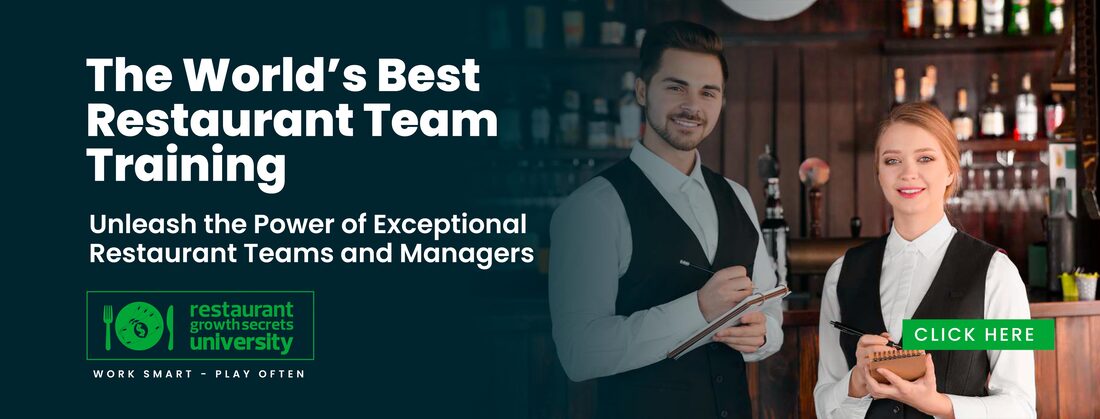|
By Jonathan Maze Want a look at the restaurant of the future? Try Netflix.The world’s eateries are vastly different from an online purveyor of movies and television shows. Yet companies like Netflix, or Amazon have thrived over the years based on their ability to personalize the customer experience. They know where you come from and what you order. And they often know where you go when you’re done.
Source:http://www.nrn.com/technology/restaurants-use-technology-personalize-customer-experiences By Paul Armstrong Influence is one of the big "issues" this year I am interested in. I will be poking it with a big, scratchy stick as the mucky, murky world needs a damn good prodding. Got something to say / think I should know? Get in touch. A report called "Influence 2.0" by Altimeter and Traackr landed with a thud in my inbox. This +30-page report does not particularly help crystallise the how but perhaps it does the what and the why, per its author, Brian Solis, "[The report] offers a [call for a] new mindset and approach to customer experience where influence become the driving force for change." Definitions and quoteporn aside, the report is a solid start for someone looking to create a POV for their company or just grapple with the issue a bit better. However, throughout the report I was struck that this is just another term for public relations. I grilled Solis further and asked if we are just seeing another unneeded term; "The truth is that any time this topic comes up it is aiming to put a pretty bow on an old way of thinking about engagement. The inference with influence 2.0 is to make a formal push into a new era of engagement that ties more specifically to customer experience or the experience the experience of anyone who is looking for useful information or relationships to make decisions." Whether you believe this or not, "Influencer Relations" is the term du jour across agencies. Some are doing "it" (the "industry" is so amorphous) well and others are simply extending reach - slash that - most are simply extending reach. According to the report - 1/3 of marketers have a low opinion of influencer relations; Solis is surprised this number isn't higher; "The truth is that marketers don't know what they don't know and therefore they cannot see the value of influencer relationships if they don't understand what influence really means - not just to marketers but more importantly the impact and the relationships people of influence have with their community. When we traditionally think of influencer marketing we think about old methodologies and perspectives and applying those to new tech platforms. But here we are not really doing anything new. Therefore we cannot expect anything new." A sentiment echoed in the goals of influencer marketing; The report does call for a more professional approach - which I am 100% behind - but ultimately I believe brands/clients/agencies and the public are better served with more straight talk, honest insights and a focus on the end-user than more terms, wishy-washy extensions and flaky approaches to new...anything. A topic (warning: book plug) I cover ruthlessly in "Disruptive Technologies; Understand, Evaluate and Respond". Budgets are of course mentioned in the report and I asked Solis why they were so low (STAT). He agreed that the lack of ROI and maturity of the industry are key issues; "Influencer marketing is immature in that it hasn't tried to expand its horizons beyond traditional marketing tactics and measurement and this is because it has lacked vision and ambition from marketers everywhere. A lot of marketing is still routed in outdated principles and it is difficult to break those norms when that is what marketers are paid to do today. The budgets are a reflection of the values that they carry to the business and until marketers think like business managers or owners marketing will always be just that….marketing."
After talking with multiple brands and agencies on this subject "we" are still happy with just giving access or money to "influencers" and not demonstrating any (or very little) ROI. We continue to skirt around the issue of... gulp...being a better business that people like... Solis is optimistic we are at the beginning of something big here; "The point of this entire paper and this entire conversation is that we are inviting 'influencer marketers' to add value to their work and to their companies by thinking more holistically and approaching engagement and relationships with influencers and customers and any stakeholder for that matter based on mutual value, respect and a hope to continue engagement over time. This is not about paying people with followers event though that will continue as a practice. This is a call for a new era of marketing beyond influence to improve the journeys for customers and stakeholders everywhere." It will be interesting to see these figures next year, I expect a lot of money and tech to move into this area in 2017 but ultimately little will shift that will mean big changes for businesses. Per Solis, expect a more practical guide to follow but you can download the full report here [email signup required]. Paul Founded HERE/FORTH - the emerging technology advisory. Follow him on Twitter here and check out #social_lens (a Slack product) if you want neutral advice when big tech news breaks. Source:http://www.forbes.com/sites/gradsoflife/2017/01/05/how-out-of-school-enrichment-can-close-the-stem-talent-gap/#1d81e3421f3a By Haris Bacic When it comes to business marketing, there are several things we can learn from restaurants and how they’ve evolved over time. As business owners and managers, it is our responsibility to grow our businesses by utilizing effective marketing strategies.
Part of that business growth comes from takings risks while minimizing losses. In this article, we’ll go over several key restaurant marketing principles and how they could apply to your business as well. Diversify Traffic SourcesNot too long ago, restaurants mainly depended on one traffic source – dine in customers who specifically came to sit down and eat. But restaurants have quickly dived into trying to expand into other traffic sources as well such as take out, drive through, delivery, online orders, catering, and so on. Just like restaurants have done recently, one of the key things behind your marketing strategy should be to diversify your traffic sources too. That means if you are just looking for SEO services, you should stop and re-think what you’re trying to accomplish. Instead of trying to find an SEO agency to help you with SEO, find a full-service marketing agency. Full-service marketing agencies can help you with much more than SEO. They are usually knowledgeable in pay per click, social media, press releases, and many other marketing mediums. They can create a marketing plan for you that will focus on specific traffic sources that will be effective for your business. SEO services itself can take a long time to produce any meaningful results, so can your business really afford to only depend on SEO for marketing? Service Or Product Pricing StrategiesWhen it comes to pricing your services or products, you will be surprised to know that pricing changes can effect your business quite a bit. If you think about it, you probably have competitors, so your customers don’t need to buy your services or products. They usually do it because of your unique selling proposition, and sometimes that can mean more relevant pricing. Restaurants have several pricing strategies they use. One of the main ones is individual pricing, in which each food item is priced and bought separately. If you want a steak entrée meal and a mashed potatoes side, you simply pay for each one. This is the most common pricing method businesses use. You sell each service or product individually. Another method is grouping multiple food items into one “meal” and selling it for one main price. The advantage of this method is that you generate more revenue per customer. Depending on how your profit margins look, this could drastically boost your revenue. For example, if you are selling t-shirts and hats and majority of the customers only buy a t-shirt, that means if you add a hat in the t-shirt sale for an extra fee (such as $5), you will generate $5 more per each t-shirt order. As long as you are making a profit on that hat, it’s still better to move product than have it sit in your storage for a long time. And finally one of my favorite pricing methods is the buffet-style method. This is where a customer pays one price and they get to eat as much as they can. The reason this method works so well is because it helps you offer a lower price, which makes it available to a larger audience. For example, in a popular buffet chain Golden Corral, customers pay about $12.99 for a dinner meal. Although that seems cheap, you have to think how much food an average person can actually consume. Sure some people will eat $30 worth of food, but most people are likely to eat less than half of how much they pay. Using that example, can you try to create a similar pricing strategy for your business? Can you bundle several products or services together and just charge one higher fee? One advantage of that is if the customer does not use a specific service, they still pay you for it regardless. And you didn’t really have to upsell 10 different things. “All you can ____” type of deals can help increase the perceived value your business offers. Performance-based IncentivesAnd finally we have performance-based incentives. In the restaurant industry, most of the employees that deal with customers directly such as waiters, waitresses, and bartenders are paid a low base wage with tips as an incentive to provide a good service. Although you can use that method for your employees, specifically sales people, I’m suggesting to try using this from a marketing perspective such as affiliate marketing. Affiliate marketing is a way to get new clients by having other marketers, bloggers, etc. promote your services and for each successful lead or sale, you pay them a specific amount as a commission. Almost 90% of advertisers that use affiliate marketing think it is very important to their overall marketing strategy. So there is no reason why your business cannot look into utilizing it as well. Source:http://www.searchenginepeople.com/blog/learn-from-restaurants.html By Kiran Ross Digital marketing is essential for businesses, and it is crucial for marketers to have a grasp on the elements of digital marketing.
Why? Consumers are online, and they research, shop, review and recommend brands all the time, using multiple devices. While traditional marketing mechanisms have their merits, brands cannot afford to rely solely on TV, radio and/or print. These promotional tools do nothing in terms of engagement or promoting meaningful conversations with consumers. Wheelhouse Advisors created a terrific infographic on digital marketing. They basically break digital strategy into eight essentials. Are you paying attention to these areas? Perhaps there are some things you’ve never given thought to. The start of a new year is a great time to evaluate your digital marketing efforts and see what needs shoring up — and what needs a desperate first look! Here are the eight essentials with my thoughts on each: 1. SEO: SEO stands for Search Engine Optimization. In a nutshell, it means “How well are you doing at making your website visible to search engines?” You can pay to boost your visibility, do it organically or use a combination of both. I always advise clients to create useful, relevant content. When readers share your content, it improves your organic search results. One of the best ways to create and share content is a business blog. (To read my previous column on the benefits of business blogging, click here.) As you create blog posts, you are creating indexable pages. Learn how to artfully weave keywords into your blog posts. 2. PPC: Pay-per-click means exactly what you think it does: Each time a reader clicks on one of your ads, you are charged. For example’s sake, think of Facebook ads; they are highly targeted and deliver immediate traffic results, but as soon as your “boost” ends, the clicks/traffic/likes drop off. There are many agencies (even local) that specialize in SEO and/or PPC, and this might be a good option if you don’t have the time (or knowledge) to dedicate to monitoring campaigns. Monitoring campaigns includes watching for keyword performance and tweaking to maximize ROI. 3. Customer communications: This is where the ongoing relationship, customer engagement and meaningful conversations come into play. Much of this just isn’t possible with traditional methods of push marketing. A strong customer communications plan helps convert a one-time customer into a brand advocate — the holy grail of customer interaction. With a little work on your part, your customers can and will do some of the heavy (marketing) lifting for you! You may know this as CRM (customer relationship management): strategies and technologies that businesses use to manage and analyze customer interactions and data. Remember to acknowledge and respond to customers ASAP! 4. Outbound email campaigns: Email marketing shouldn’t be overlooked. It remains a terrific way to communicate with past, current and potential customers and generate business. Your success will increase if you tend to your email list. Segment it out so not everyone receives every single email. Perhaps you own a jewelry store. You might send an email specifically to past purchasers of bridal sets detailing ideas for anniversary gifts. ( Click here to read my previous column on email marketing.) 5. Inbound lead nurturing: In the infographic, Wheelhouse Advisors notes that on average, a lead requires 10 marketing-driven touches to convert from the top of the funnel into a paying customer. “Lead nurturing” is another way of saying lead generation. You want to tailor communications and avoid sounding overly aggressive or sales-y. Through your conversations and nurturing, you are essentially earning the right to convert. 6. Social media: The infographic smartly (and succinctly) points out that social media is used to “engage with existing and potential customers, strengthen relationships and raise brand awareness.” All true. To maximize the impact that social media has on your overall marketing strategy, have a plan. Know who will post, what she will post and when. Designate who will monitor and respond to inquiries and comments. Social media is a great place to share your content (like blog posts) as well as other relevant or trending content. I highly recommend determining where your customers are hanging out (if they’re younger than 35, they’re likely on Snapchat), and start there. You don’t have to spray content on every social network. Do a little research on the front end and work smarter — get comfortable with the platforms that will best serve you and your customers and use those. 7. Content: Content marketing encompasses many things: print pieces, digital pieces like infographics, social media posts, blog posts and even videos. Are you producing relevant, shareable content? Would you read your own content? Good content drives traffic and increases brand awareness. As mentioned before, it helps with search, too, when properly promoted. 8. Website: I’ve had more than one client wanting to dive into social media and drive traffic to their website. The only problem The website stinks. It might be outdated, not mobile-friendly or not even user-friendly. My recommendation in these cases: Update your website, then come back and see me about driving traffic via social media and other content. Don’t neglect your website! Update things like “About” and other basic information (address, phone number, etc.). Make sure links are working and any lead gen forms are functional. Pay attention to your images: Are they current? Is the resolution good? Hopefully, you’ll find the digital marketing infographic from Wheelhouse Advisors as useful as I did. It offers a comprehensive look at the essential pieces of a digital marketing strategy. Make it a priority to examine your strategy and make necessary pivots. Source:http://www.bizjournals.com/kansascity/news/2017/01/27/social-media-matters-8-essential-digital-marketing.html By Dale Hursh It is not hard to find information regarding digital marketing budgets. Many papers and articles discuss what percentage of your overall marketing budget should be devoted to digital and, as you might expect, opinions vary greatly. Most of the published data is oriented toward consumer-oriented businesses. In this article, I will provide a framework to help B2B marketers determine their optimal spend on digital. The big pictureThe clear trend is that digital marketing continues to grow as a percentage of overall marketing spend. In fact, eMarketer predicts that digital will account for nearly 45 percent of media ad spend by 2020: As companies continue to expand their digital marketing programs, here’s a breakdown of specifically where they plan to increase their investment: As you can see, search advertising, mobile and social marketing top the list for growth initiatives in 2016. Mobile is acceleratingIt cannot be overstated how much mobile will continue to grow and eventually dominate as the primary digital interface we use. The most recent CMO Survey predicts that marketing spend on mobile will increase by 118 percent in three years, in response to usage trends. Based on feedback from our B2B clients and information we receive as a Google Premier Partner, I would not be surprised if these mobile numbers are actually conservative. B2B marketers must understand the role mobile currently plays and how it is trending. It may not be your biggest source of website traffic today, but it is likely your fastest-growing segment and needs to be your focus for the future. Guidelines for B2B digital marketing budgetsNot surprisingly, B2B marketing spend is all over the map and varies depending on whether the business is product-focused or service-focused: On average, according to the CMO Survey, it looks like B2B firms spend 6 to 9 percent of company revenues on marketing, with service-oriented businesses being at the lower end and product-oriented businesses being at the higher end of that scale.
Determining your B2B digital marketing budgetAs the CEO of a B2B digital marketing agency with over 17 years’ experience, I often get asked, “How much should I invest in digital marketing?” Of course, there’s no single answer — it all depends on your business. The first step in answering this critical question is to determine what role digital should play in your marketing mix. The answer will likely vary based on the type of product you sell and how complex your sales cycle is. Here are a few examples. Complex sales cycle For example, we work with many SaaS (software as a service) firms. These companies generally have long, complex sales cycles. This is typically a high-cost investment and a high-consideration purchase/partnership. We have seen various spending models work in this situation, with companies spending anywhere from 15 to 100 percent of their marketing budget on digital. I’d have to say that a reasonable average is 25 to 50 percent of total marketing investment spent on digital. To do some easy math, assuming a SaaS company with $50 million in annual revenue:
Let’s say you have a simpler, more standardized product that can be purchased online, such as an expensive replacement part for equipment, a server or storage array. In this case, digital will likely play a larger role in your overall marketing mix. This could put you in the 35 to 75 percent range for digital marketing spend. Let’s look at a reasonable digital marketing budget for the same size B2B e-commerce company:
Don’t ignore the substantial and continual growth of mobile, and use these B2B budget ranges as a starting point for your successful digital marketing program. Source:http://marketingland.com/much-b2b-companies-invest-digital-marketing-204623 By M Rafiq Marketing is tough, irritating, and time-consuming. As a freelance app developer, copy writer, or an ecommerce seller, you may find it difficult to grind and promote your business while working 10-12 hours a day. But marketing is the engine that powers your sales. The more you do it, the faster you gain new customers, and the more you close in a sale. If you’re asking yourself how you can market your freelance business in less time while still seeing great results, you’re in luck. Below are some simple tips that will help answer your question: Encourage the Word-of-Mouth AdvertisingWord-of-mouth advertising is one of the most effective marketing techniques out there. Consumers, especially millennials, have reportedly revealed that they prefer to buy products recommended by their network of friends and family. Word-of-mouth marketing gets you new customers fast, at no charge, and within a short period of time. However, you must sell quality products if you want to motivate your customers to tell others about your products.
Let’s face it, your product’s value is what brings in new customers and keeps the existing ones. Customers will only share their experiences with friends and family when they benefit from your product, which kind of goes without saying. Write for YourselfDeveloping content is an important and inexpensive marketing technique. From infographic content to video clips to blog posts, all web content are created from written words. And when done right, writing for your website, blog, or any of your other social media channels can be a powerful marketing system for your business. A study by Curata reveals that over 50 percent of marketers that curate content indicate that it has increased their traffic, brand visibility, and sales. And the best part? It doesn’t take a long time to create. If you’re a content creator, a 500-word blog post can’t take you more than 60 minutes to write. Develop a simple, consistent blogging strategy to keep your readers more informed – so they know, like, and buy from you. Additionally, when you fill up your online space with valuable content, you’ll have a pool of resources that you can leverage to amplify your other marketing campaigns, such as e-mail cold-calling. E-mail Cold-CallAs a freelancer, time is your most precious resource. How can you write for yourself, for others, and, still, market your business? How can you efficiently manage your time? E-mail cold-calling – the art of soliciting prospects to buy your products – is one of the simple, most cost-effective marketing strategies for freelancers. And it’s less time-consuming. All you need is a potential customers’ e-mail address and high-converting pitch. The later is easier to craft. You can keep a customized pitch template and use it, without much re-writing, to e-mail cold-call prospects anytime. I recommend you send between 20-30 e-mails a day, as that won’t take you more than 30 minutes. Let’s be honest, only a tiny number of prospects will respond to your cold pitch. That’s not bad though; just get ready to sell valuable products to them or offer them top notch services when they hire you. Marketing Is Creativity in ActionThat’s the whole idea behind growth hacking. That through creativity, ingenuity, and personal skills, any entrepreneur can grow their business in no time. You can ship your quality products to your customers in an hour or less. You can write a 500-word article for your blog within 30 minutes. You can email call-call 20-30 prospects in less than an hour. Just be creative, and find the hour you need to get the work done. Source:http://tech.co/market-freelance-business-2017-01 Baked founder Matt Lewis never thought about hiring an ad agency to help boost holiday sales at his three bakeries in New York City, but he did want to run some kind of campaign this year to get people to preorder pies for Thanksgiving. A former ad man himself, Lewis thought he was capable of making social media content that was good enough to draw in some customers. In the past, he’s hired photographers and considered hiring a design agency to spruce up the Baked website. But the costs are high. A photographer would cost him $1,500 a day, and a video shoot, about $3,800 a day. "We don't really have those funds," says Lewis, whose warm smile and calm demeanor might lead you to think he’s a yoga teacher, not a baker. "There's no return, or the return would be so small after you've paid everybody out. It wouldn't be worth it." This past fall, Lewis participated in a 12-hour, Facebook-hosted workshop to learn how to create dynamic ads and general content using a mobile phone and some apps. Prior to the class, Baked’s Facebook page was largely comprised of static photos of swirly cake tops and colorfully iced cookies. But with a budget of $50, a little arts and crafts, and the help of Facebook’s Creative Shop, Lewis was able to produce more dynamic content. Using cardboard, fabric, clamp lamps, and production mobile apps, Lewis and his team learned how to shoot stop-motion videos, add moving graphics to still shots, and cut together appealing product videos. The ads appear to be working. Baked's staff was instructed to ask new customers where they heard about the bakery and, Lewis, says, "Almost unanimously, everybody who had never heard of us was either from a friend or from the Facebook ads." Baked saw a 40% increase in pie sales compared with Thanksgiving 2015. In addition to the preorder campaign, Baked ran a series of Facebook ads to attract new customers. "We had a 70% increase in capturing email addresses as well as actual physical addresses," Lewis says. "And then we actually lowered our cost of [customer contact information] acquisition by about 32%." THE CREATIVE SHOPFacebook’s Creative Shop is not the single, centralized place that its name implies. Rather, its 150 employees are scattered around the company’s many offices worldwide and have been helping major brands develop Facebook-specific content for roughly seven years, says its director, Tom Brown. Most recently, the Creative Shop worked with Airbnb to advertise its new Experiences product via a series of live tours of cities led by Airbnb hosts. The videos, all roughly 30 to 45 minutes long, take potential customers through activities that only locals might know about, like cooking classes in Miami, marine explorations in Cape Cod, and a performance art workshop in Paris. In the last year and a half, the Creative Shop has drawn together a four-person team to create tools and tutorials for small businesses like Lewis’s bake shop. The experiment was part of an effort to see if tutorials might push small and local businesses to engage more with the platform, whether through paid advertising or organic content. "[Small businesses] don't think that they have the equipment in order to create great content. That they don't have the money to spend to hire somebody else and they just don't have the knowledge," says Keara Tanella, SMB Lead at Facebook's Creative Shop. "They're not creatives at heart. They're not advertisers. These are small to medium business owners." To test her hypothesis, Tanella brought together three merchants to try out a series of instructional videos aimed at helping them make beautiful content on the cheap. The businesses included Lewis’s Baked as well as eyewear company Felix Gray and hair product specialists Twisted Sista. MOBILE STUDIO TECHNIQUESThere were two major techniques Tanella tried to impress on the small business owners: 1) Use what you have; 2) Spend very little on what you don’t. To do that, Tanella suggested sprucing up old product shots. Baked, for instance, had 36 images of cake that the company had shot but never used. If Lewis and his crew didn’t have imagery or needed new assets for a campaign with specific goals in mind, Tanella showed them how to snap a photo with natural lighting. The group also learned how to utilize an array of free mobile apps to tweak and polish their images. "You don't need to have a long-form storytelling video and have complex editing," says Tanella. "You do some really simple techniques." Like Baked, Felix Grey and Twisted Sista enjoyed better returns on their ads than previous efforts. Felix Grey lowered its cost per customer acquisition by 63%; cost per click decreased 44% and click-through rate increased 1.9%. For Twisted Sista, which was hoping to build brand awareness, 77% of its web traffic started coming from Instagram after a series of revamped ads ran there. The company also spent less money to reach 29% more people in one-tenth the time. What all these statistics say is that polished DIY content worked to drive interest among consumers. SMALL BUSINESSES AND THE BIG PICTURESmall businesses are becoming increasingly important to Facebook as it strives to become the single platform for consumers to coordinate the concerts, book clubs, birthday parties, and myriad other events that make up your offline life.
In the last year, a series of features have cropped up to this effect. Now when friends post restaurant recommendations, Facebook plots out each suggestion on a map published at the top of the post. Beneath individual suggestions, users see a card with the name of the business, its rating, price range, and a link to its own Facebook business page. This year, Facebook also broke out events into a standalone app and integrated ticket purchasing through Ticketmaster and EventBrite. These new tools are just the beginning. Eventually, Facebook wants its platform to do everything, from booking a hair appointment to finding the right holiday gifts at a local store. This will be harder to pull off than mapping out a recommended restaurant, though VP of Ads and Business Platform Andrew Bosworth thinks it’s merely a matter of striking the right partnerships. "We've got all the sides of the marketplace, we just don't have the stuff like the connector," he says during an interview in New York. He means that while Facebook has buyers and sellers, it doesn’t have the infrastructure for transactions. To become a commercial hub, Facebook needs the right integrations. Right now, the Mobile Studio represents an opportunity for Facebook to draw in incrementally more ad revenue through small businesses. But eventually, once the company figures out a way to better link consumers to businesses using its platform, those small business advertisers could act as the "connectors" Bosworth spoke of. Despite soaring ad sales in 2016, Facebook CFO David Wehner said during Facebook's third-quarter earnings call that investors should anticipate slowdown in 2017 because the network will soon max out on the number of ads it puts in front of users. Ad load, which is Facebook lingo for measuring how many advertisements it can pack into feeds, has been a big driver of growth for the company, so when it reaches its limit, Facebook won’t be able to sustain the same revenue jumps it’s been making. As a result, the company is pushing its premium video ad products more. Since it can't stuff more static ads into feeds, it's hoping to grow the number of video ads. Recently Facebook began testing ads that roll out midway through a video. Now, Mobile Studio is part of the effort to grow the Facebook stock of video ads. By teaching small businesses how to make more effective video content on the cheap, Facebook is encouraging businesses to spend a little extra to promote it. The hypothesis is that if businesses know they have good creative that drives sales, they’ll be willing pay to promote it and extend their potential ability to reach customers (rather than just posting organically). Baked, Twisted Sista, and Felix Grey represent just three of the 60 million businesses with Facebook accounts, and the social network is keen to make all of them paying advertisers. So far, only 4 million of the businesses on Facebook advertise (Baked, Felix Gray, and Twisted Sista are among them), but they spend big. In the third quarter of 2016, Facebook pulled in $6.8 billion in advertising revenue, up 59% from the same period a year before. THE GOOGLE DILEMMAFacebook has one major competitor when it comes to the small business arena: Google, a company that not only earns more digital ad revenue than Facebook, but also has been pursuing small business ad spend for a lot longer. For years now, Google has courted businesses as a way to build out its index of services and stores. As it’s driven deeper into shopping, the tech giant has continued to create tools for businesses to help drive both online and offline sales. "A lot of paid search in the retail space has converted over to our shopping format," says Allan C. Thygesen, Google’s global head of SMB sales. "I think that is just a more compelling format and a better experience both for consumers and merchants." And Google is also staying ahead of innovation for small businesses. In June, before the launch of Facebook's Mobile Studio, YouTube rolled out the Director's App: guided video creation for small businesses. It enables people to create a short, relatively professional looking video about their business in under 10 minutes. This all gives Google a natural advantage. Internet search still plays a vital role in most people’s shopping process; it’s how 60% of people research potential purchases, according to Synchrony Financial’s Fifth Annual Major Purchase Consumer Study. So the question is: With its Mobile Studio tools, can Facebook convince small businesses with limited ad cash to spend that its platform is the most valuable? That may be a matter of how big the company plans to scale its small business efforts. Right now, the Creative Shop is reaching out to small and medium businesses via targeted advertising on its platform, webinars, and live workshops. "We've created videos that show how to actually remix content using your phone and send them out in ads in the news feed to small business owners," says Tanella. This, after all, is Facebook's edge: the ability to place hypertargeted ads within a news feed. If that translates into increased visibility for businesses, then it may very well be worth the ad spend. Source:https://www.fastcompany.com/3067635/robot-revolution/at-san-franciscos-new-cafe-x-a-robot-makes-your-coffee-just-the-way-you-lik By David William Seventy percent of small to medium sized businesses polled said they will increase their digital/web-based marketing budgets in the new year.
That’s according to GetResponse, an email marketing software solution serving over 350,000 small businesses, marketers and brands. GetResponse recently commissioned a study to examine expected digital marketing investments among US-based small and medium-sized businesses in 2017. The study polled 200 US-based small to medium sized business decision makers at the end of 2016, and also looked into the channels most likely to drive spending. The study findings were eye-opening. Of the companies indicating in the poll they would increase their budgets, 30 percent said the budget will “increase considerably,” while 40 percent said it will “increase somewhat.” Projected Digital Marketing Spend in 2017According to the GetResponse study, 28 percent of the remaining businesses polled said their budget would remain unchanged. Only 2 percent said their digital marketing budgets would decrease in 2017. “Digital marketing is vital for SMBs and our survey numbers bear that out,” said Simon Grabowski, GetResponse CEO and Founder. “Marketers are investing accordingly, given the substantial return on investment delivered through web-based campaigns.” Social, Mobile and Email to Drive Digital Marketing SpendThe study also noted that social, mobile and email are poised to drive the spending surge this year. Of the small to medium sized business executives surveyed that projected increased marketing budgets in 2017, 59 percent said marketing on social networks, such as Facebook, LinkedIn and Twitter will primarily drive that growth. The next channel projected to drive digital marketing spend in 2017 is said to be mobile marketing (50 percent) — either app or web-based — followed by email marketing (42 percent). Other channels driving growth are: video production (28 percent), “search marketing, including paid search” and “content creation and management” (both at 26 percent), “data collection and analytics” and “corporate website maintenance and development” (both at 23 percent), and, “commerce experiences” (16 percent). Source:https://smallbiztrends.com/2017/01/digital-marketing-spend-in-2017.html By Leigh Black Irvin If you goWhat: "Marketing: Failing to Plan is Planning to Fail" presentation
When: 11:30 a.m. to 1 p.m. Thursday Where: Room 5028, San Juan College's Quality Center for Business, 5101 College Blvd., Farmington More info: No cost. Bring your lunch. Call Chris Hunter at 505-566-3715 or Judy Castleberry at 505-566-3699. What: Farmington Small Business Development Center's marketing workshop series When: All workshops are on Feb. 2. "The Art of Generating Quality Leaders using Social Media" is at 8:30 to 10:30 a.m. "A Retailer's Guide to Online Marketing" is from 11 a.m. to 1 p.m. Bring your lunch. "5 Secrets to a Business-Building Website" is from 1:30 to 3:30 p.m. Where: Merrion Room, San Juan College's School of Energy, 5301 College Blvd., Farmington Two Farmington organizations will offer workshops to help businesses learn best practices for marketing FARMINGTON — San Juan College's Enterprise Center will offer several marketing presentations to help business owners get out the word about their products and ideas. The center and WESST, a business development organization, will host a free "bring your lunch" presentation on Thursday entitled "Marketing: Failing to Plan is Planning to Fail." Enterprise Center Director Judy Castleberry will present at the event, which is part of a series of 12 business-related presentations that will be offered this year. Also, on Feb. 2, the Farmington Small Business Development Center will offer three workshops for small businesses that focus on internet marketing. Castleberry said many of the questions the Enterprise Center — an organization that provides services and resources to new and existing businesses — receives deal with marketing. She said businesses that don't plan for marketing end up spending money on other items and then run out of funds when it comes times to market themselves. "It's more than just sticking up a sign and saying 'for sale.' It's about the entire message: branding, where do I want to advertise, what makes my business special and different in the marketplace and who is my target audience," she said. Castleberry also plans to speak about how marketing has evolved, particularly as it has moved to the internet. "Now consumers want conversation, they want to give comments," she said. "Marketing is now more about a dialogue than a monologue." While Chris Hunter, director of Farmington’s WESST office, agreed social media is a crucial part of modern marketing, he said having a website is still important for many businesses. Websites allow owners to list more information about their products and post resources. "A website also allows you to have permanency," he said. Hunter said his organization helps businesses fine-tune their marketing by targeting customers. "We have to find out who, ideally, will value what the business has to sell," he said. "We help them sharpen their product or service, help them place their product, help figure out pricing and how to promote the product, so customers can understand how their business is different, and why different can be better." The Small Business Development Center's workshops next month will focus on social media, online marketing and building a website. The featured speaker will be Eric Spellmann, who developed a popular marketing video series. "I don't believe (local business owners) are fully up on social media and the website aspect of business," said Carmen Martinez, director of the Small Business Development Center. "Websites are supposed to be a selling tool that help retailers reach out to others. We need to try to expand our selling base, especially since the economy isn't as great as it could be." Source:http://www.daily-times.com/story/money/business/2017/01/24/marketing-events-aim-help-local-businesses/97006342/ |
Marcus Guiliano
Catch up on my current posts along with industry articles Archives
March 2020
Categories |
Marcus Guiliano Productions LTD
PO Box 731
Ellenville NY 12428
(845) 647-3000
www.MarcusGuiliano.com
Disclaimer
This site is not a part of the Facebook website or Facebook Inc. Additionally, This site is
NOT endorsed by Facebook in any way. FACEBOOK is a trademark of FACEBOOK, Inc.
DISCLAIMER: The sales figures stated above are my personal sales figures. Please understand my results are not typical, I’m not implying you’ll duplicate them (or do anything for that matter). I have the benefit of practicing direct response marketing and advertising since 2009, and have an established following as a result. The average person who buys any "how to" information gets little to no results. I’m using these references for example purposes only. Your results will vary and depend on many factors …including but not limited to your background, experience, and work ethic. All business entails risk as well as massive and consistent effort and action. If you're not willing to accept that, please DO NOT GET OUR INFORMATION.
This site is not a part of the Facebook website or Facebook Inc. Additionally, This site is
NOT endorsed by Facebook in any way. FACEBOOK is a trademark of FACEBOOK, Inc.
DISCLAIMER: The sales figures stated above are my personal sales figures. Please understand my results are not typical, I’m not implying you’ll duplicate them (or do anything for that matter). I have the benefit of practicing direct response marketing and advertising since 2009, and have an established following as a result. The average person who buys any "how to" information gets little to no results. I’m using these references for example purposes only. Your results will vary and depend on many factors …including but not limited to your background, experience, and work ethic. All business entails risk as well as massive and consistent effort and action. If you're not willing to accept that, please DO NOT GET OUR INFORMATION.
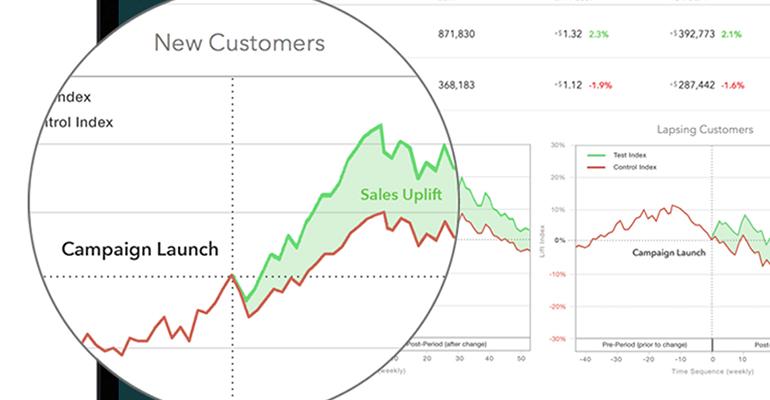

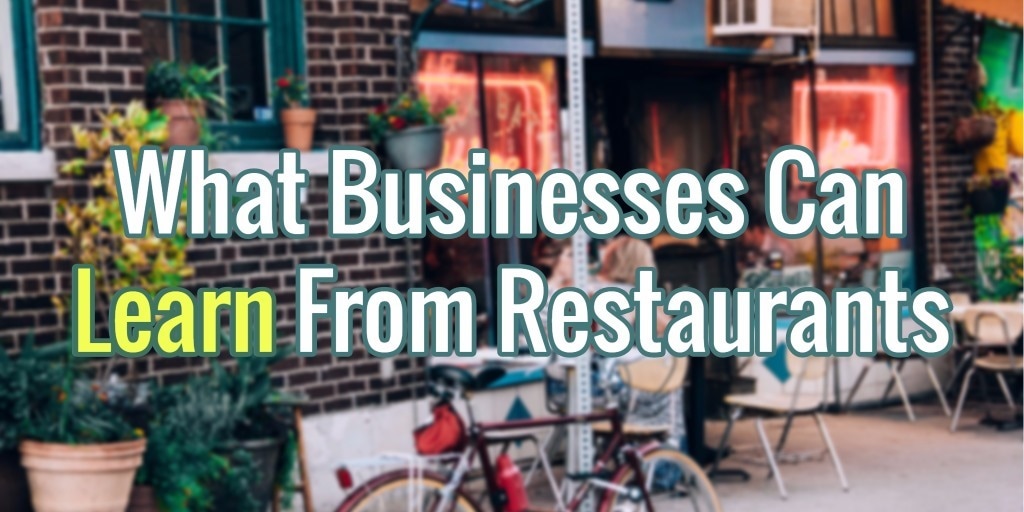


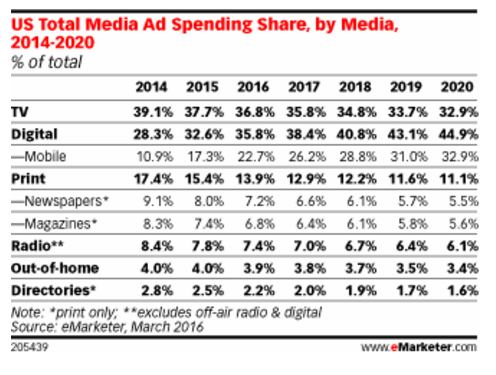
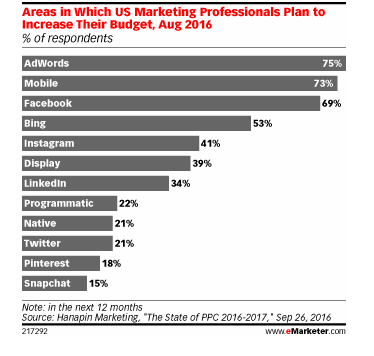
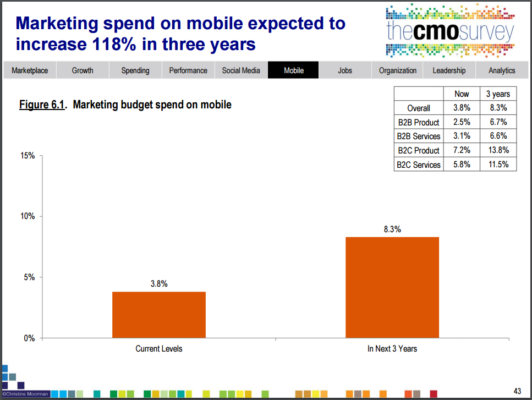
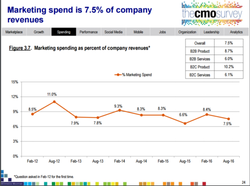

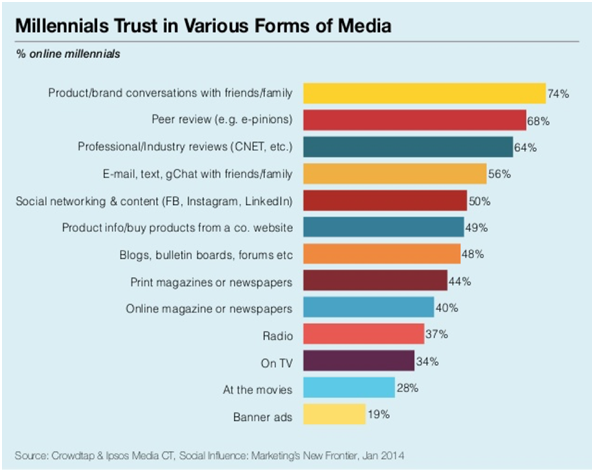







 RSS Feed
RSS Feed
